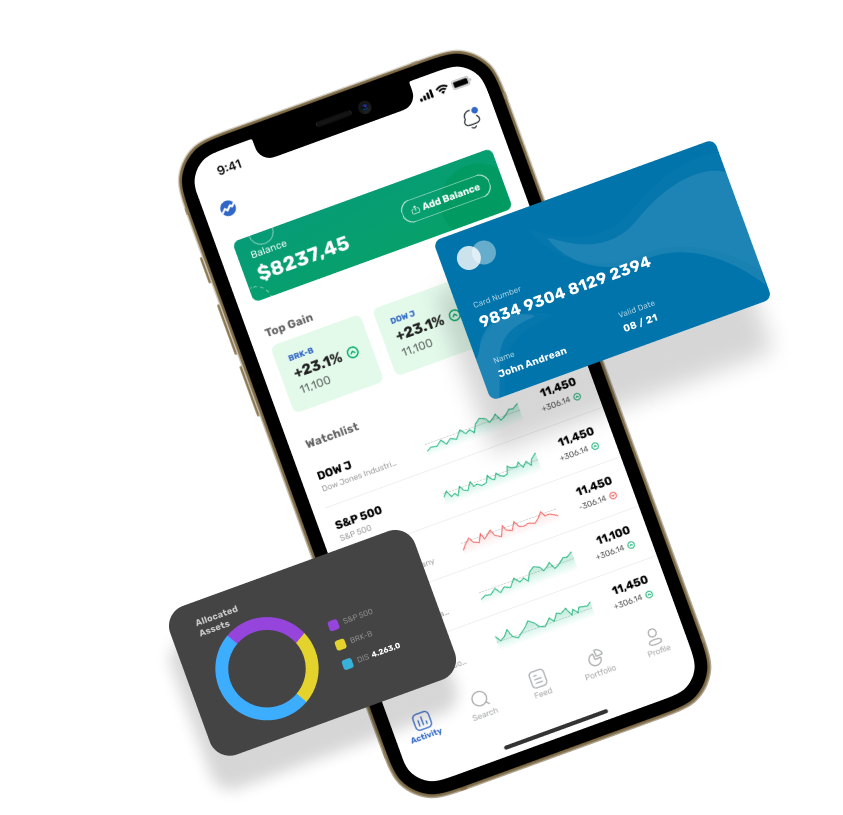20 Recommended Ideas For Choosing AI Stock Prediction Websites
20 Recommended Ideas For Choosing AI Stock Prediction Websites
Blog Article
Top 10 Suggestions For Assessing The Quality Of Data As Well As Sources Of Ai Trading Platforms Which Predict Or Analyze Price Of Stocks.
To enable AI-driven trading platforms and stock prediction systems to give reliable and accurate insights it is crucial to evaluate the accuracy of the data they use. Poor data quality may result in inaccurate predictions and financial losses. It can also cause doubt about the platform. Here are the top 10 suggestions for assessing the quality of data as well as sources:
1. Verify the Data Sources
Check the source: Make sure that the platform uses data from reliable sources (e.g. Bloomberg, Reuters Morningstar or exchanges such as NYSE and NASDAQ).
Transparency: The platform needs to clearly disclose its data sources and keep them updated regularly.
Do not rely on one platform: trustworthy platforms typically combine data from multiple sources to lessen the chance of bias.
2. Assess Data Freshness
Real-time or. delayed data: Decide whether the platform offers real-time data or delayed data. Real-time data is crucial to ensure that trading is active. However, data that is delayed may be sufficient for long-term analytical purposes.
Update frequency: Check the frequency with when data is being updated.
Historical data consistency: Check that historical data is clear of any gaps and anomalies.
3. Evaluate Data Completeness
Look for missing data: Check for gaps in the historical data and ticker symbols that are missing, or financial statements that are not complete.
Coverage: Make sure that the platform is able to cover a broad variety of indices, stocks and other markets that will be relevant to your trading strategy.
Corporate actions: Check that the platform is inclusive of stock splits (dividends) as well as mergers as well as any other corporate actions.
4. Accuracy of Test Data
Cross-verify the data: Check data from the platform to data from other sources you trust to ensure the accuracy of the data.
Find errors: Check for asymmetry, inaccurate prices and financial metrics that don't match.
Backtesting: Use historical data to backtest trading strategies and check whether the results match with the expectations.
5. Examine the Data Granularity
The platform should offer granular information, including intraday prices volume, bid-ask, and depth of order books.
Financial metrics - See if there are detailed financial statement (income statements or balance sheets, cash flows) and key ratios included (P/E/P/B/ROE etc.). ).
6. Verify that the Data Cleaning is in place and Preprocessing
Normalization of data: Make sure the platform normalizes the data (e.g. making adjustments for splits, dividends) to ensure consistency.
Outlier handling: Check how the platform handles outliers or anomalies in the data.
Estimation of missing data: Make sure that the platform is based on reliable methods to fill in missing data.
7. Evaluation of Data Consistency
Timezone alignment: Align data according to the same timezone in order to prevent differences.
Format consistency - Check to see whether the data is presented in the same format (e.g. units and currency).
Cross-market compatibility: Make sure that the data from different markets and exchanges are in sync.
8. Assess Data Relevance
Relevance of data to trading strategy: Make sure your data is in sync with your trading style.
Feature selection: Check whether the platform has pertinent features (e.g., sentiment analysis, macroeconomic indicators and news data) that can help improve predictions.
9. Review Data Security and Integrity
Data encryption - Ensure that your platform is using encryption to safeguard data during transmission and storage.
Tamper-proofing: Ensure that the data has not been manipulated or altered by the platform.
Conformity: Determine if the platform complies with data protection regulations (e.g. GDPR or CCPPA, etc.).).
10. Transparency of the AI Model of the Platform is evaluated
Explainability: Ensure the platform gives insight on the way in which the AI model utilizes data to create predictions.
Verify if there's an option to detect bias.
Performance metrics: To assess the accuracy and reliability of predictions, analyze the platform's performance metrics (e.g. accuracy, precision recall, accuracy).
Bonus Tips
Reputation and reviews from users Review user feedback and reviews to gauge the credibility of the platform as well as its data quality.
Trial time: You can evaluate the quality of data and features of the platform with the demo or trial before you decide to purchase.
Customer Support: Ensure that the platform has an efficient support system for customers to help resolve issues with data.
These tips will aid in assessing the sources of data as well as the quality of AI software for stock predictions. You will be able make reliable and informed trading decisions. Follow the best best ai trading software advice for more tips including AI stock trading app, investing ai, best ai for trading, ai for investment, investing ai, investing ai, market ai, ai for stock trading, best ai trading app, best ai trading app and more.
Top 10 Tips For Evaluating The Latency And Speed Of Ai Trading Platforms
When looking at AI trading platforms that forecast or analyze price movements, speed and latency are important factors, particularly for high-frequency traders and algorithmic traders. Millisecond delay can have an effect on the profit of a trade. These are the top 10 guidelines for evaluating the speed and latency of these platforms:
1. Real-time Data Feeds for Evaluation
Data delivery speed Be sure that your platform provides live data (e.g. sub-millisecond delay).
Data source proximity - Check to see if the servers on your platform are close to important exchanges. This will reduce data transmission times.
Data compression: Check whether your platform uses effective data compression techniques in order to accelerate the delivery of data.
2. Speed of execution test for trades
Order processing time: Measure how fast the platform processes and executes trades after you've submitted your order.
Direct market access: Check that the platform allows direct orders to be made to the exchange.
Execution reports: Check if the platform provides comprehensive execution reports, such as timestamps for orders, confirmation, and fill.
3. Examine the response of the platform
User interface (UI, or user interface speed): This is the speed at which the UI of a platform reacts to the inputs you type in (e.g. clicking buttons, loading graphs).
Chart updates Verify whether charts and visuals have a real-time update without delay.
Performance of mobile apps. If you are using a smartphone app you can expect it to run as quickly as the desktop version.
4. Look for networks with low-latency infrastructure.
Server locations: Ensure the platform is using low-latency servers situated near major financial hubs or exchanges.
Find co-location alternatives. These services permit you to host your algorithm close to the exchange.
High-speed networks - Verify that the platform is using fiber-optic high-speed networks or any other low-latency technology.
5. Check the backtesting speed and simulation speed.
Processing of historical data: See the speed at which the platform processes and analyzes the historical data to backtest.
The latency of the platform should be low enough to allow real-time simulations of trades.
Parallel processing: Find out if the platform utilizes distributed computing or parallel processing to speed up complex calculations.
6. Calculate the API Latency
API response times: Determine how fast APIs can respond to requests (e.g. getting information from the platform, placing orders).
Rate limits. Check the API's rate limits in order to avoid delays during high-frequency trading.
WebSocket support Make sure your device is running WebSocket protocol to support low-latency, real-time data streaming.
7. Test platform stability under load
High-volume trades to test the platform's ability to respond and stability, you can simulate high-volume scenarios.
Market volatility: Ensure that the platform can manage price fluctuations in times that are high-risk.
Stress testing: Determine whether your platform has tools for stress-testing strategies under extreme conditions.
8. Examine Connectivity and Network
Internet speed requirements: Make sure your internet connection meets the speed recommended by your internet provider for the best performance.
Reliable connections: Make sure that the platform supports redundant internet connections to prevent interruptions.
VPN latency: If you are using a VPN platform, make sure to determine whether the latency is high and if there are alternatives.
9. Check for speed optimization features
Pre-trade analysis The platform must provide pre-trade analyses to optimize the order routing and execution speeds.
Smart Order Routing (SOR). Verify that the platform uses SOR to identify the fastest and most efficient execution sites.
Monitoring latency: Check whether the platform has tools to monitor and analyze latency in real time.
10. Review User Feedback and Benchmarks
User reviews: Review user feedback in order to evaluate the platform's performance in terms of speed and latency.
Benchmarks provided by third party sources: Search for independent reviews or benchmarks comparing the performance of the platform versus that of its competitors.
Case studies: Check whether the platform provides cases studies or testimonials that showcase its ability to work with low-latency.
Bonus Tips
Trial period: Take a an unpaid test or demo of the platform to check out how it performs in real scenarios.
Support for customers: Ensure that the platform has customer support to optimize latency and other issues.
Hardware needs. Check to see if a platform requires specialized hardware (e.g. an ultra-fast computer) to function at optimum speed.
Utilize these suggestions to determine the speed and latency for AI platform for stock prediction and analysis. Choose one that is suitable for your trading needs, and reduces the amount of the time it takes to complete transactions. Trading platforms with low latency are essential for traders who use high-frequency algorithms. The slightest delay can adversely impact their profits. Read the recommended investing with ai recommendations for site recommendations including how to use ai for stock trading, ai for trading stocks, AI stock price prediction, AI stock investing, ai software stocks, invest ai, AI stock investing, free AI stock picker, best stock prediction website, best ai trading platform and more.